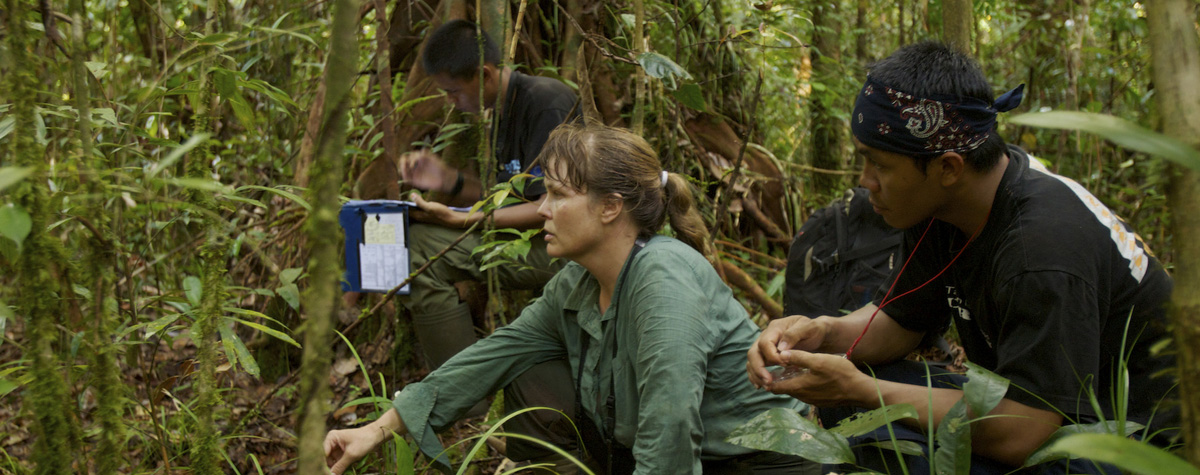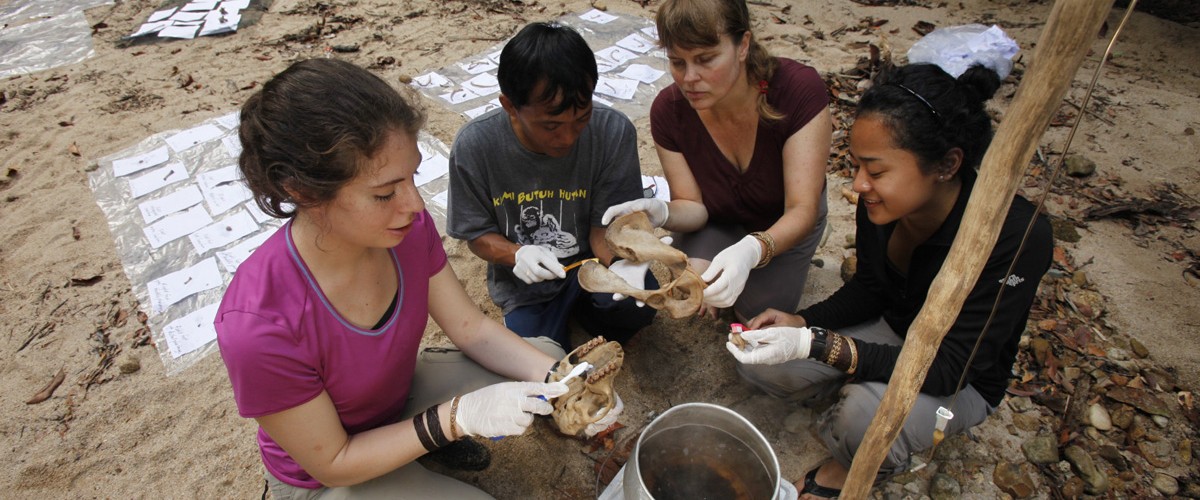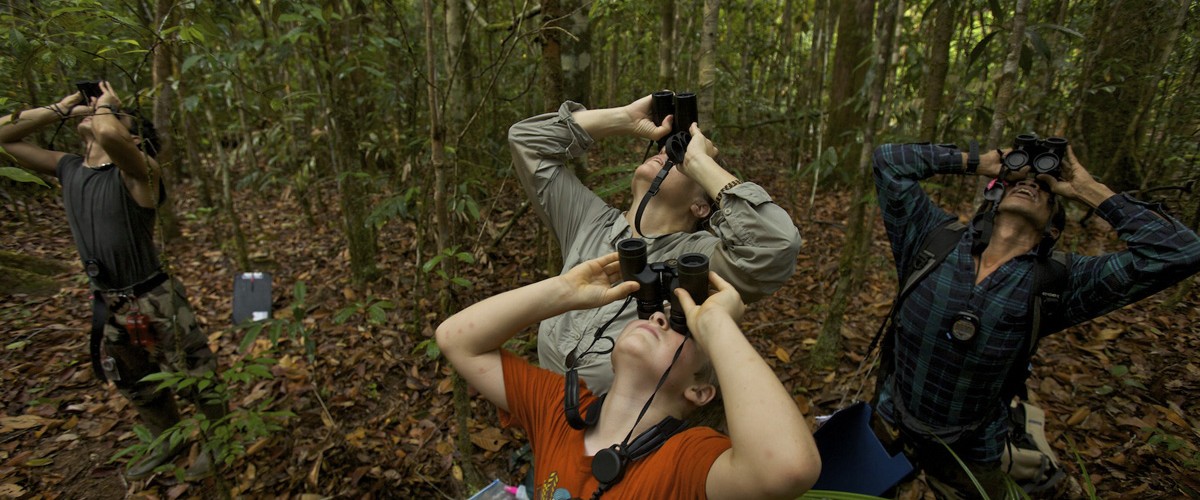By Andre Ronaldo, Rani Ferdianty & Tri Wahyu Susanto
This year we have expanded our research to the Rangkong area which is about 2 km south of Cabang Panti Research Station, towards the western edge of Gunung Palung National Park. In general, our goal in conducting research in the Rangkong is to study the differences between orangutans living in two different forest types – the primary rainforest of Cabang Panti and the recovering, selectively logged forest of the Rangkong.
The Rangkong area has 3 different habitat types, namely peat swamp, alluvial and heath (kerangas). To collect initial data to determine forest ecology in this area, we carried out a vegetation analysis. We set up 16 plots that contain ±1,803 trees that we now continue to take phenology data on each month. Phenology is the study of cycles/seasons in relation to the climate. We collect data on trees and their flowering and fruiting patterns. Checking each of these trees takes 4-6 days to complete each month.

Based on the results of our initial analysis, there are 202 tree species from 66 different families in the Rangkong area. The five tree species that have the highest Importance Value Index (IVI) are Palaquium leiocarpum (known locally as “Jungkang”) at 14.59% of trees; Syzygium cerinum (“Ubah Merah”) at 11.60%; Stemonurus secundiflorus (“Mempasir”) at 10.27%; Syzygium sp. (“Ubah”) at 7.28%; and Xanthophyllum amoenum (“Menjalin”) at 5.96%. These dominant species are generally tree species which are also eaten by orangutans.
In addition, the Dominance Index at this location is 0.01, indicating no single species dominance. The Species Diversity Index is 2.07, meaning there is a moderate level of species diversity; the Species Abundance Index is 0.9 (the abundance of all species is evenly distributed); and the Species Richness Index is 27.15 (high species richness). This shows that although the forest in the Rangkong was selectively logged, it now shows significant recovery, with areas that have gone through succession stages, and it maintains high species diversity.

In general, the condition of the habitat in the Rankgong is still good for orangutans. The presence of orangutan food tree species is 71% (143 species out of 202 tree species total). These species include both tree types that always bear fruit and those that have different fruiting seasons. Vegetation density is also quite good, namely 533 trees per hectare of land, and orangutan feeding tree density reaches 466 trees/ha. In addition, species of Ficus and liana were found, which serve as reserve food for orangutans during low fruit periods. So overall, the land meets the needs of the orangutans that are living in it.
In addition to vegetation data, we also calculated the number of nests in the Rangkong using the line transect method, where observers survey transects on the ground and look for orangutan nests in trees. This helps us to estimate the total population. We also took inventory of wildlife using camera traps. Several students from Universitas Nasional (UNAS) helped with this data collection. Since early 2021, we have identified 314 orangutan nests, but have only conducted partial focal follows on 4 individual orangutans.
Meanwhile, from the observations of one of the UNAS students, Rani Ferdianty, who studied the diversity of mammals using camera traps, 30 species from 6 orders of mammal were recorded: Carnivora, Primata, Artiodactyla, Rodentia, Scandentia and Chiroptera.

Even though the Rangkong area is classified as a disturbed forest, our findings show that the biodiversity there is still quite high. This provides further incentive for us to continue developing our research in this area and to set up long-term research projects. We are excited to share that we have plans, together with the GPNP Bureau (BTN-GP) and UNAS, to build a new research facility in the Rangkong, that will attract researchers from within and outside the country to conduct further studies.
————-
Management of Cabang Panti Research Station is conducted by the Gunung Palung National Park Office (BTN-GP) in collaboration with GPOCP/YP. Scientific research is carried out in conjunction with the Universitas Nasional (UNAS) and Boston University.









